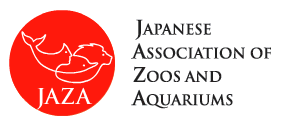
Japanese Association of Zoos and Aquariums
Encyclopedia

Japan
Japan is an island nation in East Asia. Located in the Pacific Ocean, it lies to the east of the Sea of Japan, China, North Korea, South Korea and Russia, stretching from the Sea of Okhotsk in the north to the East China Sea and Taiwan in the south...
ese zoo and aquarium
Aquarium
An aquarium is a vivarium consisting of at least one transparent side in which water-dwelling plants or animals are kept. Fishkeepers use aquaria to keep fish, invertebrates, amphibians, marine mammals, turtles, and aquatic plants...
community. Currently, JAZA has about 90 member zoos and 70 member aquariums in Japan. JAZA seeks to protect nature and animals through educational and conservation outreach.
History
JAZA was established in 1939 as a voluntary organization. At the time, it had 16 zoo members and 3 aquarium members. After World War IIWorld War II
World War II, or the Second World War , was a global conflict lasting from 1939 to 1945, involving most of the world's nations—including all of the great powers—eventually forming two opposing military alliances: the Allies and the Axis...
, JAZA promoted efforts to help restore damage zoos and aquariums.
By 1965, membership had reached 55 zoos and 33 aquariums, and JAZA was made a corporation under the Social Education Bureau (now the Lifelong Learning Bureau) of the Japanese Government Ministry of Education. A board of directors consisting of 6 representative zoo directors from around the country was created in the same year.
Education
JAZA started conferences for veterinarians and zookeepers in 1953, and for aqarists in 1956. It also established an award system to encourage successful breeding of rare animals and achievements in animal research. JAZA started publishing the "Journal of Japanese Association of Zoological Gardens and Aquariums" in 1959, and began giving qualifying exams for zookeepers and aquarists in 1971.Conservation
Jaza established the Species Survival Committee JAZA (SSCJ) in 1988. This committee aims to help manage breeding groups of animals in need of conservation and propagation efforts while maintaining the species' genetic diversity. As a result, Japanese zoos currently participate in the breeding efforts for 141 rare animals. Studbooks for the Japanese SerowJapanese Serow
The Japanese serow , known in Japanese as the , is a goat-antelope found in dense woodland on Honshū, Japan....
, Red-crowned Crane
Red-crowned Crane
The Red-crowned Crane , also called the Japanese Crane or Manchurian Crane , is a large east Asian crane and among the rarest cranes in the world...
, Hooded Crane
Hooded Crane
The Hooded Crane, Grus monacha is a small, dark crane. It has a grey body. The top of the neck and head is white, except for a patch of bare red skin above the eye...
, White-naped Crane
White-naped Crane
The White-naped Crane is a bird of the crane family. It is a large bird, 112–125 cm long, approximately 130 cm tall and weighing about 5.6 kg with pinkish legs, grey and white striped neck, and a red face patch.The White-naped Crane breeds in northeastern Mongolia, northeastern...
, and Oriental White Stork
Oriental Stork
The Oriental Stork, Ciconia boyciana, is a large, white bird with black wing feathers. It is closely related and resembles the European White Stork, of which it was formerly often treated as a subspecies. It is typically larger than the White Stork, at 100–129 cm long, tall, a weight of and...
are now kept in Japan, and the SSCJ cooperates with the International Union for Conservation of Nature (IUCN) Survival Service Commission (SSC) and the International Studbook Keepers under the World Association of Zoos and Aquariums
World Association of Zoos and Aquariums
The World Association of Zoos and Aquariums is the "umbrella" organisation for the world zoo and aquarium community. Its mission is to provide leadership and support for zoos, aquariums, and partner organizations of the world in animal care and welfare, conservation of biodiversity, environmental...
(WAZA).

